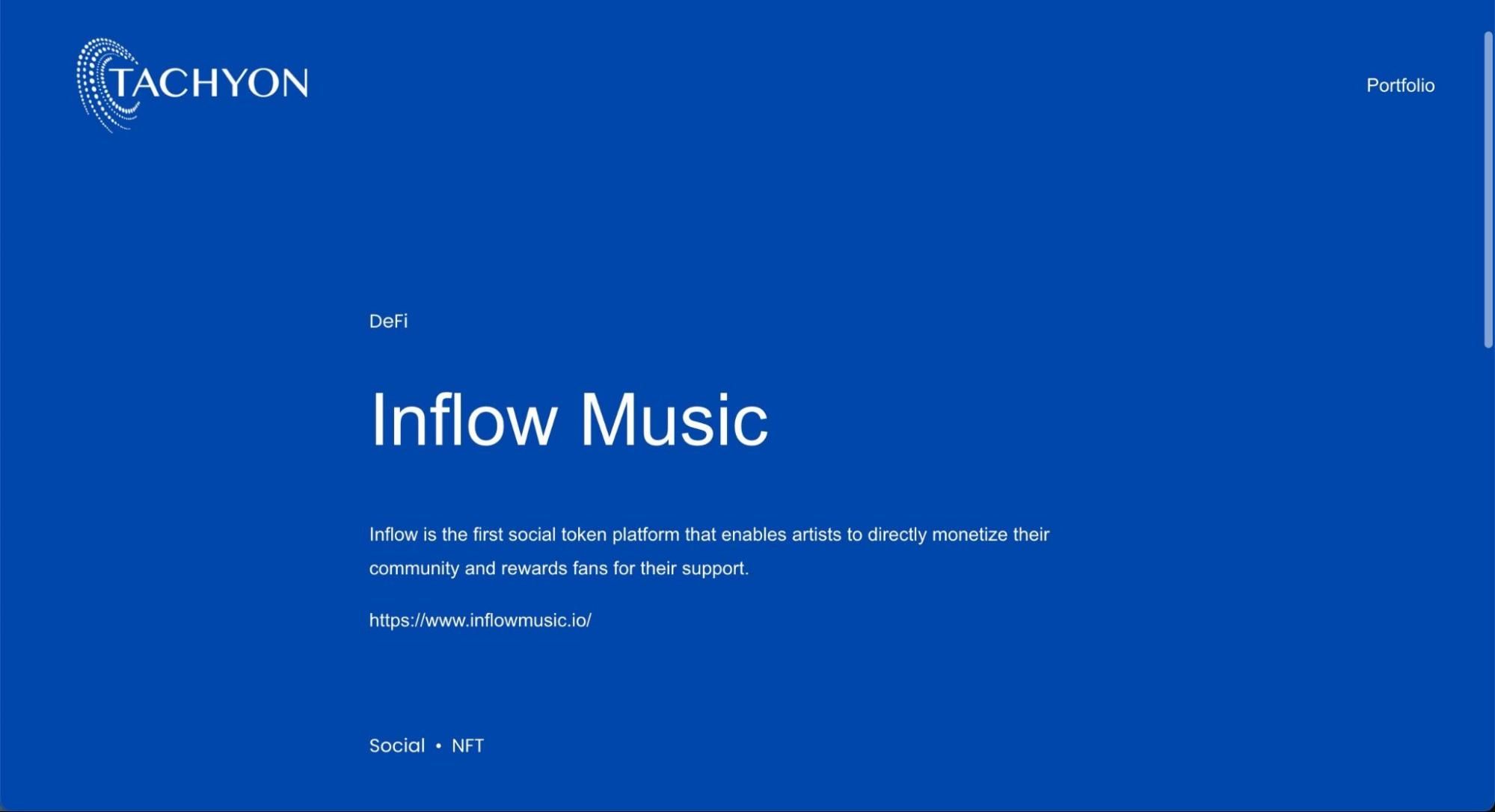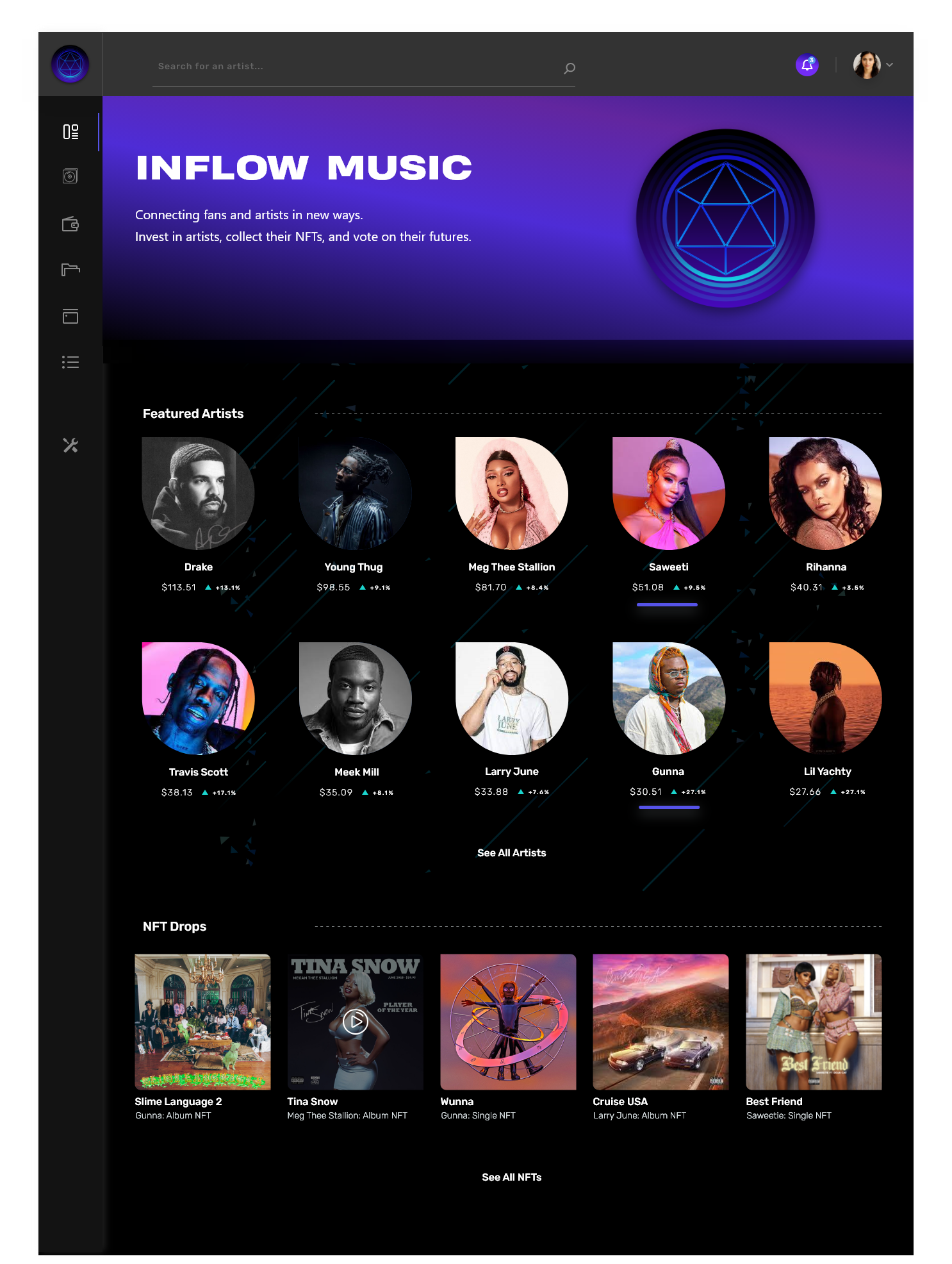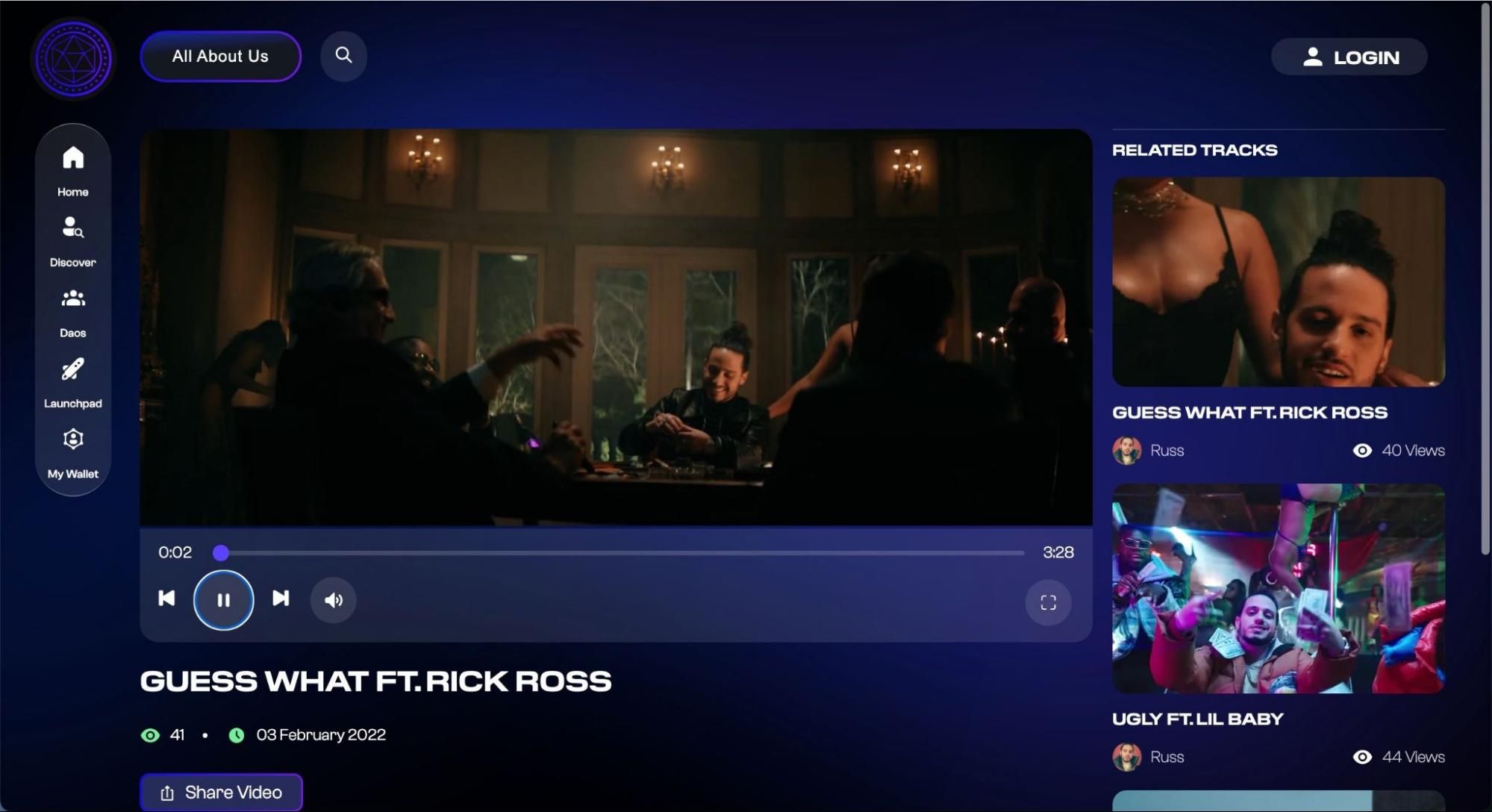How Inflow Created the First Music Platform for the Web3 Economy
Fans have historically shown their support to their favorite artists by buying their records, concert tickets, or merchandise. The allure of streaming platforms didn't change this long-established dynamic.
Even though sales are crucial to any artist's financial well-being, money isn't the only thing that matters to them. Artists also want to engage with their followers in a much closer and direct fashion, which, up until recently, could only be achieved through social media.
Web3 offers a unique opportunity for artists to connect, livestream events, and reward their fans in a way never seen before through the use of tokens and NFTs.
The first company to create a platform that fulfills this promise is Inflow. We sat down with Alexander Yoseph, co-founder and CEO of Inflow, about how their platform is poised to empower artists and fans alike, their story, and how they are doing so.
How Inflow came into being
Alexander discovered the crypto world in 2016, back when Bitcoin was worth under $1000 and Ethereum was still in its infancy. Right off the bat, he became fascinated with the opportunities blockchain and cryptocurrencies had to offer.
Part of the money he earned in his day job—which included stints at leading tech companies such as AppDynamics, Splunk, Cisco, and GitLab—was invested in crypto, one of his two biggest passions. His other passion was music, which, as a true entrepreneur, he soon would transform into a side hustle as an artist manager.
Something clicked in his mind when he realized there were similarities between the artists he worked with, some of whom would go on to become major acts, and the crypto assets he invested in.
Just as he invested early in crypto and profited from the growth later on, he thought it didn’t make sense not to do the same with artists. The issue came down to ownership. “I was like why can’t I have a stake in the artist community like I do in these tokens in the crypto space?” Alexander explained.
The goal he had set for himself was simple: he wanted to create a platform where fans could be rewarded for their loyalty, from the early days up to stardom.
“As fans, we’re the biggest economic producers in the music industry, but we actually get no type of reward for being a fan, and so crypto lets us do that. A lot of the social token platforms are missing the social aspect, and so that’s what we wanted to bring—a way for you to interact with your favorite creator in our setting, on our platform.”
He envisioned a platform that allowed musicians, athletes, and content creators to launch their own social tokens and start monetizing their community. The name he would give it was Inflow.
The first point he wanted to address was to allow artists not only to create tokens for financial gain but as a tool to exchange value. “Our main thing is providing utilities for these social tokens in the form of access and experiences,” Alexander said.
Thanks to Inflow, artists could mint tokens that would allow their fans to “gain access to their livestreams—thanks to Livepeer—their music videos, their songs, their vlogs, interviews, or any type of studio sessions. The first kind of utility that we’re going to give is access to content and experiences.”
He rendered this vision in a white paper he wrote in 2019, and incorporated the company a year later during the pandemic. Afterward, he got into the Tachyon Accelerator, an accelerator for early-stage blockchain and Web 3.0 startups backed by ConsenSys and Protocol Labs (the company behind Filecoin and IPFS).

“That really kicked off our journey and solidified us as a key player in the space,” said Alexander.
Connecting artists with fans in web3
At the end of the accelerator residence, Alexander and his co-founder, Richard Melkonian, had built an MVP ready to be launched publicly. Inflow currently allows superstars like Migos and Lil' Baby to create tokens that their fans can use to access:
- Exclusive meet-and-greets
- Special events only accessible by token holders
- Free merchandise
Inflow also allows artists to create DAOs that give fans the power to vote on matters like what artists they should collaborate with.

Not only can artists reward fans for their support, but they can also create two new revenue streams free of intermediaries through:
- A 3% fee every time someone buys or sells their token
- The sale of NFTs or royalties from their ownership
Inflow aims to revolutionize the music industry by empowering artists to release music videos, songs, and albums as NFTs. As the company explains, “fans can make money selling NFTs and artists can charge their own price instead of waiting for streaming to pay them.”
Experiences as the differentiating factor
Alexander has stressed that Inflow primarily focuses on using tokens to exchange utility between artists and their fans. However, he aims to do much more than that, as he stressed the importance of experiences and the use of video to fulfill them: “When we talk about experiences, video is the closest thing you can get to experiencing somebody, whether it be on a livestream, experiencing music videos or behind-the-scenes footage, or a studio session.”
Alexander acknowledges the massive shift transforming the music industry, where artists are becoming media companies to differentiate themselves, with video being the most important channel.
“For an artist to really stand out, these days they have to have video content to show their personality, to build a brand, and so video is just a way of getting to the customer and telling your story.”

Alexander started to look for a web3 provider that enabled video streaming, particularly for live content like concerts and shows. Alexander and Richard’s first decision was to use Amazon S3, but they soon realized its popularity wasn’t worth its high costs. They tried token gating YouTube and Vimeo videos, but that didn’t work for their users either.
As they scraped for a better solution, Alexander heard one of the founders of Glass Protocol, a video NFT platform, praise Livepeer Video Services. That was followed by a second referral by someone from Huddln, an NFT-powered social platform. For the founders, it was crucial to leverage a web3-native tool. ”Since we are progressively decentralizing, Livepeer just made sense,” Alexander explained.
Inflow’s web3 stack is made up of “whatever tools that makes us as autonomous and decentralized as possible, but then also, that it is not that hard to implement. I think it’s a mixture of ease of implementation and, “does it align with our core mission of being hands-off?”. We want to exist in the community and be really a tool that is run by the people. We built it for the people, and so it only makes sense that we let people run it, eventually, once we put it in the right direction.”
The decision to try Livepeer Video Services didn’t come without concerns. Richard, the CTO, was originally doubtful about trying Livepeer’s infrastructure because “he didn’t know what to build—we’re building so many things and he didn’t know how much time this would take.”
However, this feeling soon changed when Richard found that “just from a development standpoint, it’s been really easy to use. He said it works perfectly, and now we’re just getting the video-on-demand stuff ready to go.”
Alexander and Richard found Livepeer Video Services ideal for live streaming, which plays a major part in its value proposition.
“Being able to have this one-on-one conversation, or being able to have this intimate experience with them is very important. Attaching a value to that and basically being rewarded in experience with these tokens and with these livestreams—that’s the first thing that Livepeer Video Services is going to be helping us with.”
A second crucial way they are using Livepeer Video Services is for on-demand video and token-gating exclusive content. “Music and videos are going to be the core content that’s on our platforms,“ Alexander explained. “Token-gating is important as well, too—being able to token-gate, not only with our technology but with the help of your technology.”
The fact that Livepeer Video Services’ team has worked shoulder-to-shoulder with the founders was the final point that convinced them. “We need a team that can hop on calls with us and that’s really important for us,” explained Alexander.
Thanks to Livepeer Video Services, the founders are ready to hit the market while keeping true to Alexander’s original vision. As he put it, “The reason why I started Inflow is because it’s a mixture of two of my passions, music and crypto – music and economics, really. I think creating an option where people could work on their passions is the biggest thing crypto could have –financial freedom for the everyday person.“
If you are running a web3 tool like Inflow and you are interested in trying Livepeer Video Services, please contact us at hello@livepeer.com. We’d love to help you stream using Livepeer.com!